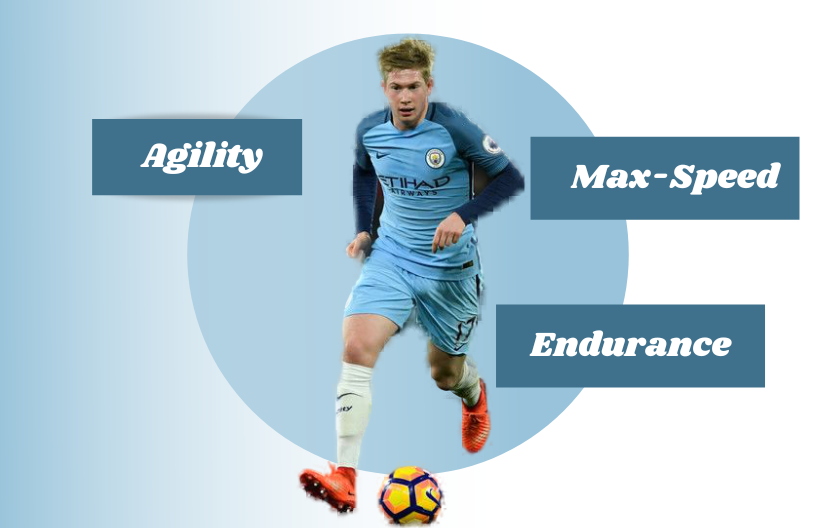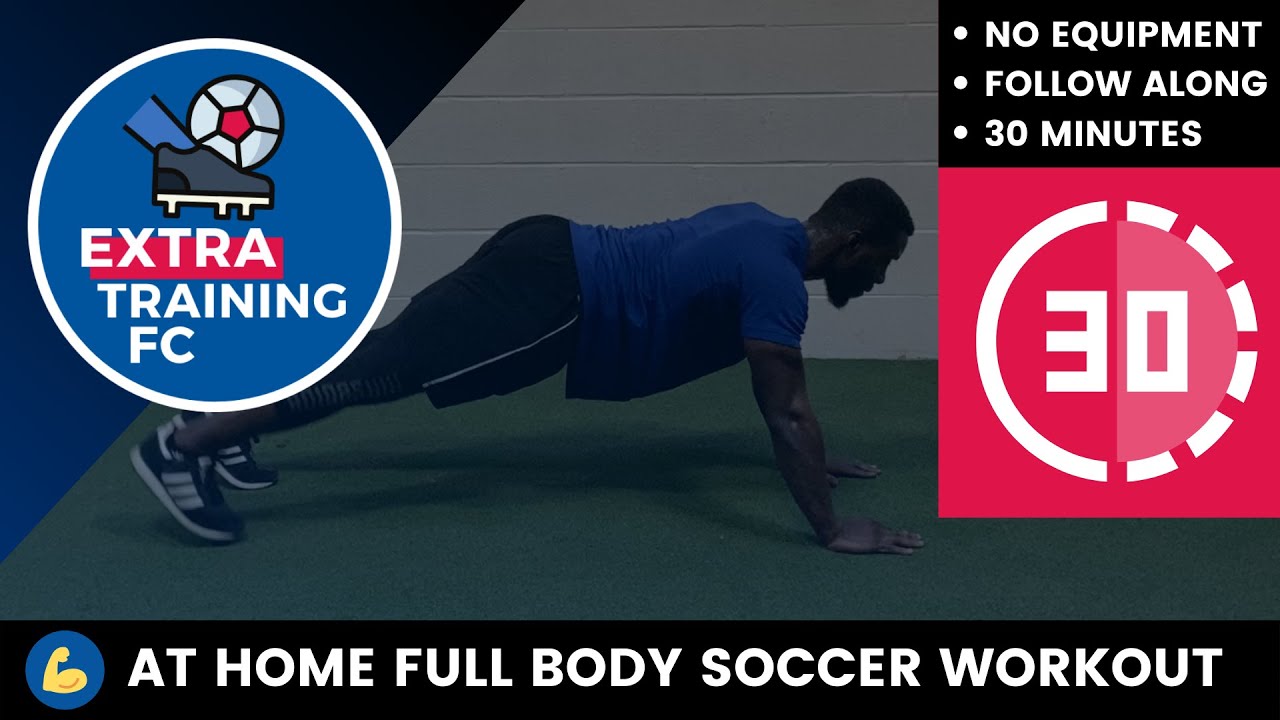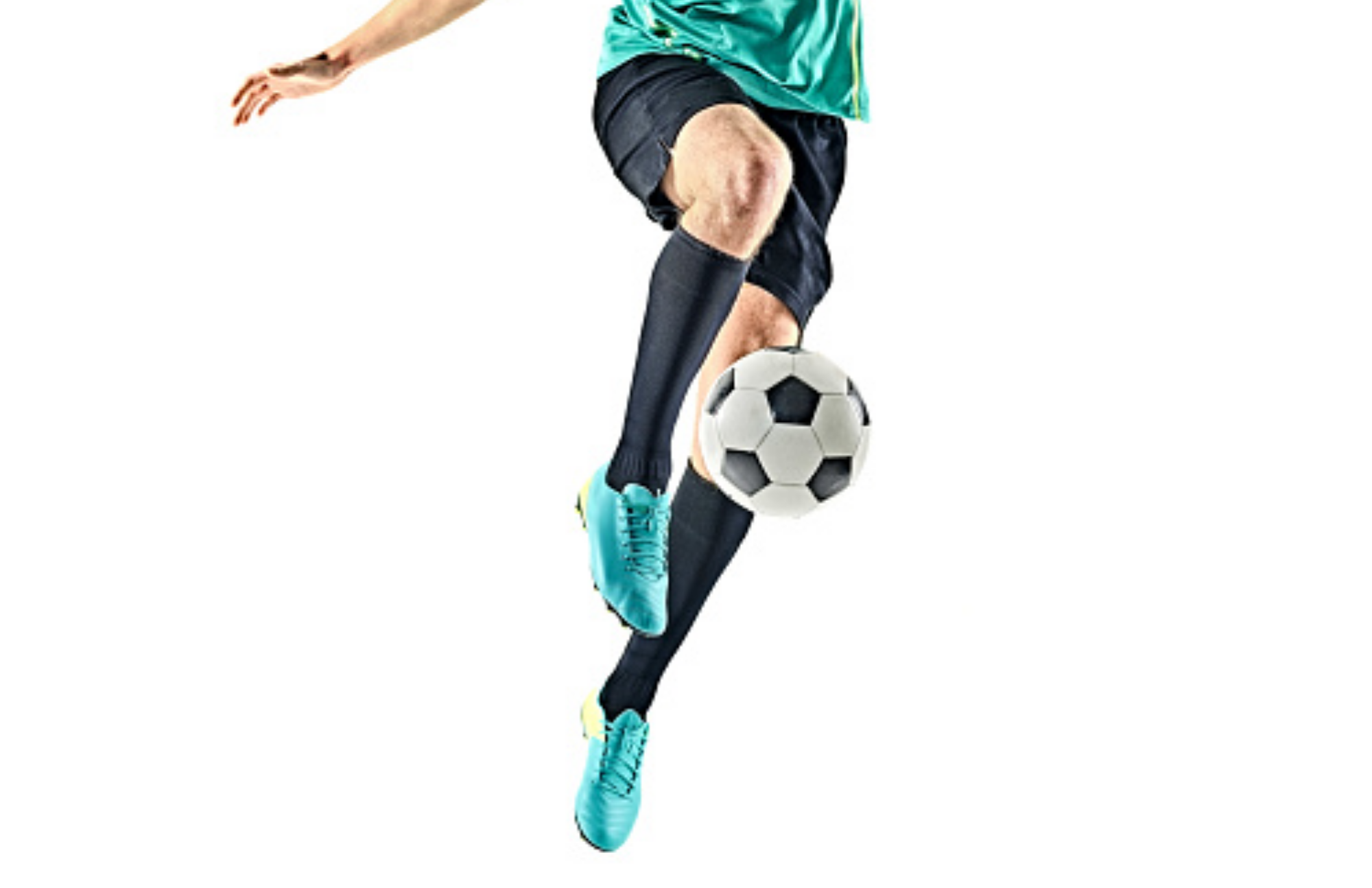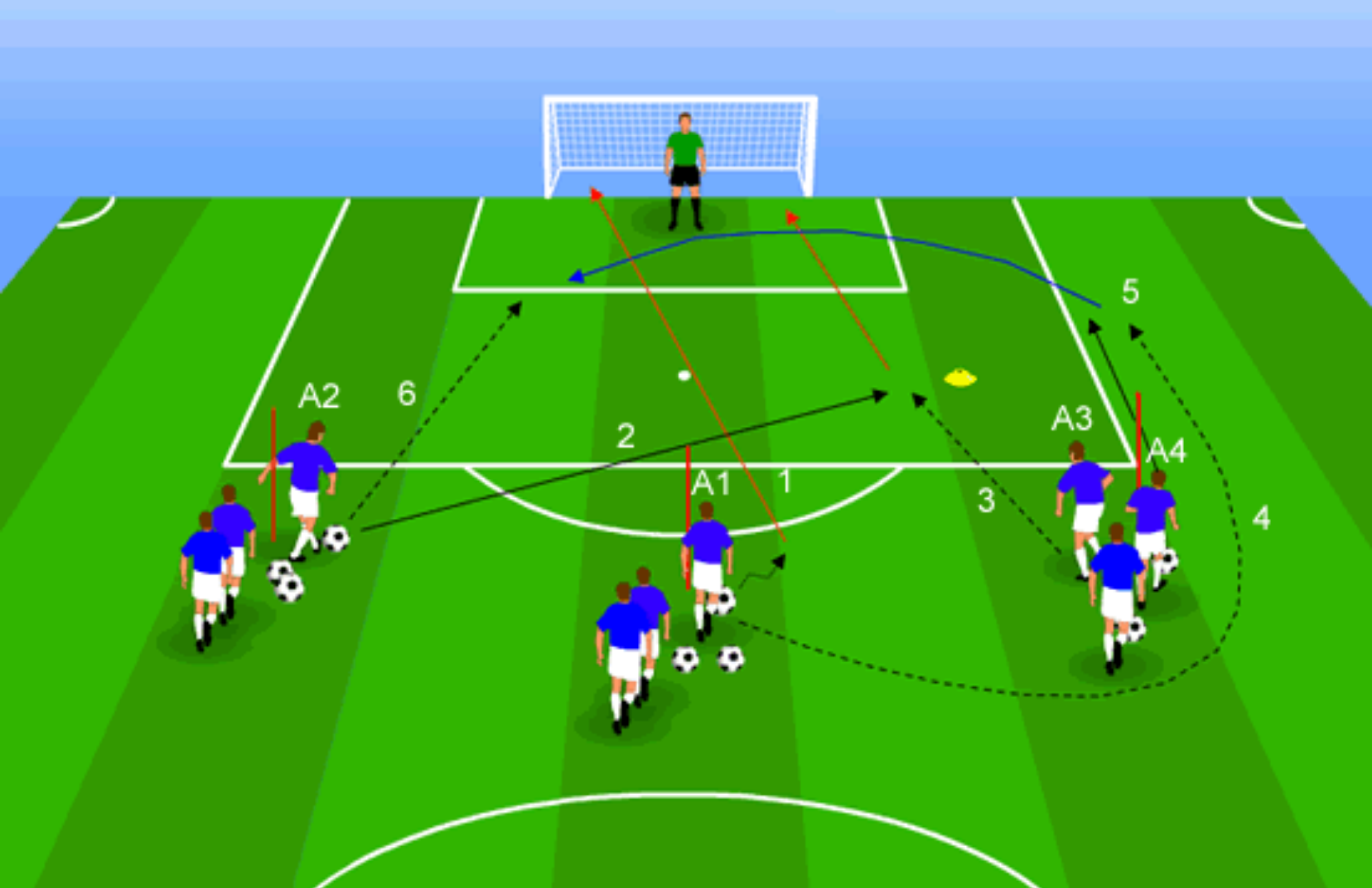Full Body Workout For Soccer Players - Increasing Max-Speed, Agility, And Endurance
To be able to play soccer, players must have a high level of endurance and speed. Endurance is important because it allows and helps them maintain stamina throughout the game, whilst speed is necessary for attacking and defending. Running, pushups, squats, lunges, and weightlifting is the best full-body workout for soccer players.
Author:Daniel ClarkMar 08, 2024558 Shares30.9K Views

To be able to play soccer, playersmust have a high level of endurance and speed. Endurance is important because it allows and helps them maintain stamina throughout the game, whilst speed is necessary for attacking and defending.
Running, pushups, squats, lunges, and weightlifting is the best full-body workout for soccer players. This workout plan will help players in increasing their maximum speed, agility, and endurance.
Should Soccer Players Do Full-body Workouts?
Whole-body exercisesare the way to gobecause they stimulate your movements and changes of direction on the soccerfield. If you are a female player, try a more intense workout than your male counterparts.
The Benefits Of Full Body Workouts For Soccer Players
The game of a soccer player is based on speed, agility, and power. Soccer playersmust be able to accelerate and change direction quickly, for example, when kicking the ball they have to go everywhere just to land a ball on the goal, and it requires a large number of fast-twitch muscle fibers in their bodies. Because they work on both the upper and lower body at the same time.
Full-body workouts are excellent for improving these characteristics. This type of workout also improves flexibility, which is important for soccer playersbecause it allows them to keep their balance when running with the ball or defending an opponent.
How To Train Your Speed
Sprint-Backpedal Repeats
This drill mimics field movements, such as when a defender must read a play and attack the ball. When transitioning from a backpedal to a sprint, also reinforces proper acceleration mechanics.
- Set up five cones 5 yards apart in a straight line. They are numbered 1-5.
- Standing on Cone 1, sprint to Cone 3.
- Return to Cone 2. Maintain a strong core, a low posture, and weight on the balls of your feet.
- Change direction by driving with your legs and sprinting full-speed forward toward Cone 4. When sprinting, raise your knees to generate force and strike the ground with the balls of your feet.
- Return to Cone 3.
- Change your direction once more and sprint past Cone 5.
Lean, Fall, And Sprint
This drill is excellent for learning how to fall into the proper angle and set your center of gravity in order to improve acceleration from a standing position.
- Stand with your feet hip-width apart and your body stiff from your ankles to your neck.
- Lean forward until you start to fall, to the point where if you don't walk, you'll fall on your face. This is critical for generating forward momentum and approximating the angle required to effectively accelerate. Most people believe they are leaning farther than they are, so be brave!
- Raise your feet to the balls of your feet as you lean. Don't sag at the waist.
- Drive your body forward by moving your knees and pushing off the ground with your legs as you drive out of the fall.
- Swing your arms from the shoulder joint, keeping your elbows bent at 90 degrees.
- Maintain an open and relaxed grip on your hands.
- Sprint between 10 and 20 yards.
- Retrace your steps for recovery.
- Rep 8 to 10 times more.
How To Train Your Agility
Ground Marker Drill
Here's how to do it:
- Place four ground markers in a straight line three yards apart.
- Place another marker three yards to the left in between each set of markers.
- Sprint from one marker to the next, bending down to touch each one with your hand.
- The focus is on quick side steps rather than turning to face the marker and sprinting forward, which takes more time.
Cross Drill
- Arrange a series of cones in a cross formation.
- Run backward to the center cone, sidestep to the right cone (or your left if you're doing the drill), and then sidestep back to the center cone, still facing the same way.
- Turn and sprint forward to the end cone from the center cone.
- Now return to the entry cone, sidestep to the left, sidestep back to the center, and turn and sprint back to the start.
How To Train Your Agility
Speed Hill Sprints
Hill sprints, without a doubt, require a great deal of mental and physical toughness. That is why when developing an effective speed and endurance training program, you must include this workout activity:
- You'll need a hill that takes at least 3 minutes to run up.
- Before attempting this exercise, players should have warmed up as with other soccer endurance training drills.
- The players begin by running 5 uphills reps of one minute each, followed by a jog-down recovery interval.
- After the first 5 reps, allow them to rest for 3 minutes.
- Then, they do five 45-second uphill runs with jog-down recovery followed by a three-minute rest.
- After that, they do three 30-second uphill sprints, jogging down after each rep to recover.
- Rest for 3 minutes more.
- Finally, they run the entire length of the hill in 3 minutes, accelerating in the final 30 seconds.
Shuttle Runs
Other popular speed endurance soccer drills used by coaches to train speed, acceleration, and anaerobic fitness include shuttle runs. Shuttle runs are an effective drill to include in your soccer fitness drills and workouts because they are generally simple and can be done anywhere, for example, in the gym, on pavements, or even on grass.
- Set up three cones in a row with a distance of 20 to 30 yards between them.
- The player sprints from cone 1 to cone 2, touches the cone, and sprints back to cone 1.
- After that, the player sprints from cone 1 to cone 3, touches the cone, and sprints back to cone 1. (That's counts as one rep)
- Perform 5 reps for a total of 500 yards.
- Allow the players to rest for 5 minutes before starting the next set.
- Time your players and encourage them to beat their previous best.
Why Is Strength Training Important For Soccer Players And How Can It Improve Performance On The Pitch?

30 MINUTE FULL BODY SOCCER WORKOUT ⚽️| FOLLOW ALONG ⏱| NO EQUIPMENT️ 💪
Strength training is a type of exercise that increases muscle strength and size. Strength exercises are important for soccer playersbecause they can improve their performanceon the field. Soccer playersmust have strong muscles to keep their balance and power during a game. Strength training can also help players perform better in high-intensity activities such as sprinting and jumping.
Soccer playerscan perform strength exercises in a variety of ways, including weight lifting, body-weight exercises, and plyometrics.
Conclusion
These full-body workouts for soccer players are a must! When you quit your workout program, you are losing more than just the benefits of the workouts you are missing. You'll lose muscle mass and strength as well.
The good news is that you can maintain your gains even if you stop exercising for a while. It only takes a few minutes of intense exercise every day to keep your muscle size and strength in check when playing an actual game on the field.

Daniel Clark
Author
Daniel Clark is an experienced author at Tennessee Independent, renowned for delivering insightful articles with a professional approach. With a focus on factual accuracy and authoritative insights, Daniel covers a wide range of topics, providing valuable information and engaging narratives. His expertise in areas such as performance, player profiles, and current events ensures that readers receive trustworthy and informative content. Daniel's commitment to delivering well-researched articles makes him a reliable source for expert perspectives on Tennessee Independent.
Latest Articles
Popular Articles

